TOGAF® Enterprise Architecture Foundation & Practitioner
Learn from the Best, Learn from TopD
Features of This Course
Why Choose TOGAF® Enterprise Architecture Foundation & Practitioner?
Provider: GEL
Accredited by: The Open Group
Exam vouchers included
Free resit
Course duration: 30+ hours
Access Period: 12 months
Tutor support
Quizzes and exam practice
Works on mobile devices
Course Overview
This Enterprise Architecture Foundation and Practitioner course draws on the latest TOGAF® Standard, 10th Edition, encompassing all topics required for the Foundation and Practitioner syllabus. These topics include:
- Essential concepts of Enterprise Architecture and the TOGAF Standard.
- Core terminology used within the TOGAF Standard.
- An overview of the Architecture Development Method (ADM) cycle, detailing the objectives of each phase and methods for adapting and scoping the ADM.
- Techniques that facilitate the effective application of the ADM.
- Practical implementation of the ADM, focusing on iteration, partitioning, and application within a digital business context.
- The role of Architecture Governance in the evolution of architecture.
- Architecture outputs — detailing the deliverables generated during the ADM process.
The TOGAF Enterprise Architecture Foundation course equips participants with fundamental knowledge and understanding of Enterprise Architecture using the TOGAF methodology, enabling them to actively engage in architecture projects or work with architectural deliverables.
Target Audience
- Individuals seeking an introduction to the TOGAF® Standard, 10th edition, or interested in the latest TOGAF Enterprise Architecture certification program.
- Architectural professionals aiming to secure a globally acknowledged qualification.
- Enterprise architects who aspire to contribute to or direct teams involved in Enterprise Architecture projects.
- Aspiring Enterprise Architects who are looking to obtain comprehensive TOGAF® Enterprise Architecture certification.
- Anyone aiming to successfully pass the official TOGAF® Enterprise Architecture Part 1 and 2 exams.
What will you learn?
The TOGAF Enterprise Architecture Foundation and Practitioner course encompasses:
- Fundamental concepts of Enterprise Architecture as defined by the TOGAF Standard.
- Essential terminology specific to the TOGAF Standard.
- The Architecture Development Method (ADM) cycle, including the objectives of each phase and strategies for its adaptation and scoping.
- Techniques that support the effective application of the ADM.
- Practical implementation of the ADM, focusing on iteration, partitioning, and its use within a digital business context.
- The role of Architecture Governance in architecture development.
- Architecture outputs — the deliverables produced during the ADM process.
Upon completing the Practitioner level, participants will demonstrate their capability to:
- Employ the TOGAF framework for managing and driving organizational change.
- Apply the TOGAF methodology to diverse transformation efforts within an organization.
- Utilize TOGAF techniques in both ongoing and forthcoming architecture projects.
Why take this course?
- This course offers a self-paced learning structure, allowing students to tailor their study time to fit their schedules.
- The content is organized into short, manageable videos for easy absorption.
- Frequent quizzes ensure a solid grasp of the material covered.
- Practice exams and regular assessments prepare students for the certification process.
- Participants who successfully complete the course will demonstrate a thorough understanding of the fundamental TOGAF Enterprise Architecture principles and concepts, enhancing their ability to support and contribute to EA teams.
- Passing the Foundation (Part 1) exam enables students to advance to the Practitioner (Part 2) exam.
- The TOGAF Enterprise Architecture Learning Studies provide opportunities for candidates to prove their capability to apply the TOGAF Standard across various organizational contexts.
- Successfully completing the TOGAF Learning Studies qualifies candidates for The Open Group Applied Enterprise Architecture Practitioner badge.
- For those concerned about the costs associated with TOGAF certification, this course includes a FREE exam voucher and a FREE resit, subject to terms and conditions.
- This TOGAF® Enterprise Architecture Foundation and Practitioner course is accredited by The Open Group.
Start Learning & Growing Your Skills Today!
Join 5,000+ successful students in a journey called growth. Let’s Talk 🙂
Instructor LED Live Session
Self Paced Learning
One to One Training
Course Curriculum
In the initial module, an introduction is provided concerning the main features of the course, along with a comprehensive learning plan, the goals and objectives set forth, and its overall structure. Additionally, participants are given access to a course guide, a package containing various diagrams, a glossary, documents for further reading and links, and access to download necessary copies of framework publications.
Module 1: Concepts
The first chapter opens with an Executive Overview, which provides a broad outline regarding The Open Group’s perception of Enterprise Architecture, addressing several basic inquiries such as the nature of an enterprise, the necessity of an Enterprise Architecture, and the reasons for employing the TOGAF Standard as a guiding framework for Enterprise Architecture. The subsequent chapter delves into the foundational concepts of the TOGAF Standard, including an introductory depiction of the Architecture Development Method (ADM), the Enterprise Continuum, Architecture Repository, Content Framework, Enterprise Metamodel, and Enterprise Capability.
Module 2: Introduction to the ADM
The initial chapter of this module elaborates on the elementary structure of the ADM along with various critical aspects. The following chapter shifts focus towards the governance and scoping pertaining to Enterprise Architecture.
Module 3: Phases of the ADM
This module provides an overview of the purpose and goals associated with each phase of the ADM, starting from the preliminary phase through to phases A-H. It includes explanations regarding Requirements Management and the role of architecture within an Agile Enterprise.
Module 4: Introduction to ADM techniques
In this module, an introduction is given to the supporting guidelines and techniques of the ADM. It outlines the purpose behind Architecture principles, the attributes of a sound Architecture Principle, and proceeds to discuss business scenarios, interoperability, the Business Transformation Readiness Assessment, and risk management strategies.
Module 5: Introduction to applying the ADM
This module starts by directing learners on where detailed guidance on applying the TOGAF Standard can be found. It discusses the application of iteration to the ADM, the Architecture Landscape, Architecture Partitioning, and the purposes of EA Capability, concluding with how the TOGAF Standard facilitates support for the digital enterprise.
Module 6: Introduction to Architecture Governance
An explanation is provided on the concept of Architecture Governance, initially focusing on its nature and characteristics. It also covers the role and responsibilities of an Architecture Board, alongside the functions of Architecture Contracts and Architecture Compliance.
Module 7: Architecture content
Focus in this module is placed on the content of Architecture — the outputs generated during the execution of the ADM. It starts by defining the key concepts of Architectural Artifacts, the essence of building blocks and their utilization in the ADM, and outlines the TOGAF Standard deliverables that are created and utilized across various ADM phases.
Module 8: The practice exams
This module contains two practice exams, one of which is provided by The Open Group, while the other has been developed by Good e-Learning.
Module 9: TOGAF Enterprise Architecture: Foundation wrap-up
The concluding module offers information regarding the procedure for booking the exam and details other courses that might be of interest.
Module zero provides an introduction to the main aspects of the course, including its features, learning plans, objectives, and structure. Participants will receive a course guide, a set of diagrams, documents for further reading and links, as well as access to downloadable essential framework publications.
Module 1: The context of Enterprise Architecture
Module one delves into defining Enterprise Architecture and examining both Architecture Governance and Architecture Security. This module incorporates a scenario enabling participants to apply what they have learned.
Module 2: Enterprise Architecture in digital contexts
In Module two, the focus is on the management of Agile development and digital business within TOGAF and the iteration in the TOGAF method. A scenario is included for individuals to demonstrate their acquired knowledge.
Module 3: Phase A – The starting point and stakeholder management
This module explores the initial Phase A of the ADM and the management of stakeholders during Architecture work. It covers the fundamental elements of phase A, including Architecture views, viewpoints, and the evaluation of alternatives and trade-offs. A practical scenario is included for knowledge application.
Module 4: Architecture development
Module four delves into Phases B, C, and D of the ADM, discussing the inputs, outputs, steps, and approach for each phase, alongside security concerns relevant to each phase. It includes a scenario where knowledge can be applied.
Module 5: Implementing the Architecture
Exploring Phases E, F, and G of the ADM, Module five reviews the inputs, outputs, steps, and approach for these phases, as well as associated security concerns. It includes a scenario for practical application of knowledge.
Module 6: Architecture Change Management and Requirements Management
Module six addresses how changes are managed in Phase H of the ADM and how requirements are handled throughout the ADM in the Requirements Management Phase. It includes a scenario for participants to demonstrate their understanding.
Module 7: Supporting the ADM work
Module seven examines essential concepts that support ADM activities, such as Business Scenarios, Migration Planning Techniques, Compliance Reviews, and the Architecture Landscape.
Module 8: The Architecture Repository and Enterprise Metamodel
This module explores the Architecture Repository and the Enterprise Metamodel used to organize Architecture content. It includes a scenario where knowledge can be demonstrated.
Module 9: Application and Exam Preparation
Containing a series of exam preparation exercises based on real-world scenarios and a timed practice exam, Module nine prepares participants for the certification test.
Module 10: Course Wrap up
Module ten provides details on how to book the exam and information on other courses that may be of interest.
Exam Information
Pearson Vue is the certified exam provider for TOGAF®, IT4IT™, and ArchiMate® certifications, conducting exams globally through an extensive network of testing centers.
Included in this course are two practice exams for the TOGAF Enterprise Architecture Foundation (Part 1) and one for the TOGAF Enterprise Architecture Practitioner (Part 2). Comprehensive answers are provided to help students prepare for the official Foundation (Part 1) and Practitioner (Part 2) exams.
Participants will also benefit from a FREE exam voucher and a complimentary resit (terms and conditions apply).
Requests for exam vouchers are usually handled within two to five working days. It is crucial for students to request their exam voucher during the course access period, starting from the date of purchase. For more detailed information, please refer to the GEL Support & FAQs page.
TOGAF Enterprise Architecture Foundation (Part 1) Exam Details:
- Format: Multiple-choice exam.
- Number of Questions: 40 total.
- Duration: 60 minutes, with an extension to 90 minutes in countries where English is a second language.
- Exam Conditions: Closed book; no access to any external resources or materials during the exam.
- Passing Score: 60%, requiring candidates to correctly answer at least 24 out of 40 questions.
TOGAF Enterprise Architecture Practitioner (Part 2) Exam Details:
- Format: Multiple-choice, scenario-based questions.
- Number of Questions: 8 total.
- Scoring: Each question can score between 0 and 5 marks, contributing to a total of 40 possible points.
- Duration: 90 minutes.
- Exam Conditions: Open book; candidates are allowed to use specific resources or materials during the exam.
- Passing Score: 60%, necessitating a minimum score of 24 out of 40 points to pass.
Frequently Asked Questions
FAQs
Enterprise architecture involves the design and management of IT infrastructures, focusing on the assembly and interaction of various elements to provide a comprehensive view. Organizations often rely on TOGAF-certified architects to align these architectures with business objectives, crucial for supporting large-scale transformations, IT development, and organizational change.
TOGAF stands for The Open Group Architecture Framework. It is a collaboration platform where The Open Group works with technology stakeholders and standard-setting bodies to develop clear standards, establish policies, and disseminate effective practices.
Organizations across all sizes, sectors, and industries benefit from the TOGAF standard, as it helps streamline operations and manage complex business strategies efficiently. While any organization can adopt the TOGAF standard, optimal usage requires a certified architect.
The certification path starts with the TOGAF Enterprise Architecture Foundation (Part 1), followed by the TOGAF Enterprise Architecture Practitioner (Part 2) exam. The TOGAF Business Architecture (BA) exam and credential courses do not require previous exam completions.
TOGAF-certified professionals typically earn between $85,000 and $202,000 annually, according to Payscale. The certification is increasingly valuable as businesses seek to integrate IT infrastructures with business operations globally.
The TOGAF framework boasts a widespread adoption in over 130 countries, with significant certifications occurring in the UK, USA, India, the Netherlands, and Australia. TOGAF-certified architects are in demand worldwide.
TOGAF assists businesses in effectively pursuing enterprise transformation and IT growth. It ensures that IT infrastructures align with business goals and offers resources that minimize the time spent on future project planning.
The TOGAF Foundation (Part 1) exam lasts 60 minutes, includes 40 questions, and is closed-book. Non-native English speakers may receive an extra 30 minutes. The required pass mark is 60%. The TOGAF Practitioner (Part 2) exam involves 90 minutes and eight questions, also with a 60% pass threshold.
Broker Statement
- TOGAF®️ EA Foundation and Practitioner delivered by GEL is a course accredited by The Open Group, TopD Learning promotes this course for GEL.
-
TOGAF® is a registered trademark of The Open Group.


